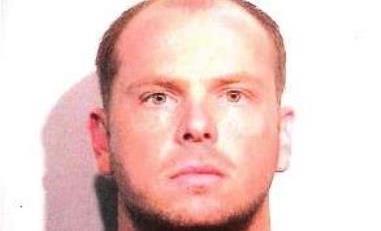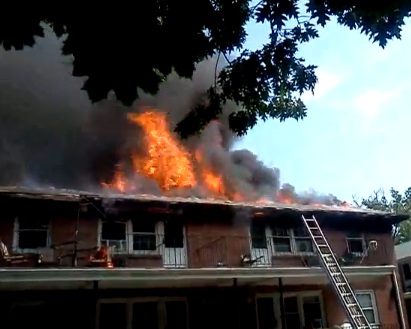UPDATE – PGFD PIO explains military police request to delete video from his phone
Click here if the video above fails to play (this is one of the videos deleted at the request of a military police sergeant)
UPDATE
After reading and participating in much discussion about this on a number of forums I am left with this question: Under what authority, law, rule, procedure, regulation, SOP was a military police sergeant operating under when he requested a civilian public information officer on public property to delete government records/potential evidence?
I am not looking for speculation or opinion about this. Just some facts.
EARLIER
It’s not quite “Comedians in Cars Getting Coffee” with Jerry Seinfeld but it’s worth your time to listen to this episode of what I call “PIOs in Cars Getting Fat” (as if I should talk).
This video is from two of the best fire department public information officers in the country, Mark Brady from Prince George’s County (MD) Fire/EMS Department and Pete Piringer from Montgomery County (MD) Fire and Rescue Services. The two teach and talk around the country about important issues for PIOs. They are close friends and (full disclosure here), if forced, they each might admit a decades old friendship with me.

Watch video with Brady and Piringer
The big topic of conversation in this video is related to this tweet posted by Brady while working at the scene of an F-16 crash earlier today (Wednesday):
At the request of Military Police on location at crash site I will be deleting any video and pictures posted on Social Media of crash area
— Mark Brady (@PIOMarkBrady) April 5, 2017
Mark explains in the video how, while operating about 200 yards from the crash scene and doing his PIO job communicating with the public and the news media, he was approached by a military police sergeant who requested to see the images on Brady’s cell phone. Brady cooperated and showed the pictures and videos to the sergeant who then asked that Brady delete some of them. Brady complied.
Mark Brady explains in the video he cooperated knowing what the military official did not — that all of it would still be saved in the delete file on his phone. A short time later the sergeant asked Brady to remove tweets that included the same material. That’s what prompted Brady’s tweet that gave everyone about a 10 minute warning before the material vanished from Twitter.
The images on Brady’s phone did not show the pilot or close ups of the crash site. Again, they were shot from the adjoining neighborhood were PGFD had set up operations. Pictures and video from citizens show much more detail — including a close-up of the pilot — than those from Brady (see Brady video at top of this page posted by The Washington Post).

Brady and Piringer conclude during their discussion that, considering their jobs are to cooperate with other agencies in a situation like this, Brady’s decision to comply with the request was reasonable. Brady felt comfortable that with the images still on his phone it would not be a legal issue of him destroying official government records. But deleting tweets still could present a problem. Attorney and firefighter Curt Varone from FireLawBlog.com posted this on my Facebook page earlier today, “The Tweets themselves could be public records depending on who posted them… and state law public records issues… they still would have to be archived in they were public records… LOTS OF ISSUES.”
My issue is not with Mark Brady. Brady made a decision based on what he felt best, considering his decades knowledge of the job he is assigned to do and his experience with these situations. My concern is with the actions of the military police sergeant and anyone who may have ordered the sergeant to take those actions.
Curt Varone made the point that a properly trained law enforcement officer, military or civilian, should not be requesting or ordering photos be deleted. Varone says those images could be considered evidence.
We should also keep in mind that the pictures and video don’t belong to the military or the federal government. Those are the property of the citizens of Prince George’s County, Maryland. Mark Brady was doing the job those citizens pay him to do — keeping them informed of emergency situations in the county.
The whole thing presents a rather chilling and sinister image. What could possibly be in those images that required the unusual step of our military requesting a representative of a civilian agency to delete photos and videos taken in a public place and that are already out in the public domain for the world to see. You also have to wonder why any of this would be handled at the street level by a military police sergeant.
If what the sergeant did is policy I would hope officials from Joint Base Andrews provide an explanation. It it isn’t policy, it would be nice if someone in charge was embarrassed enough by these actions to prevent it from happening in the future.




